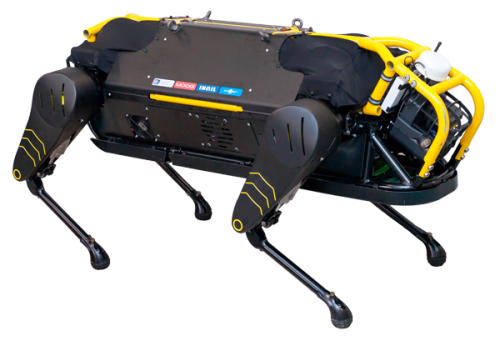About Us
Welcome.
Disaster response and other tasks in dangerous and dirty environments can put human operators at risk. Today’s remote-controlled vehicles with wheels and tracks have limited use in such missions due to their reduced mobility on rough terrain. In the wake of recent disasters (e.g. Fukushima power plants) we have witnessed how tracked robots can struggle and eventually get stuck in unstructured environments, such as stairs with rubble. A new generation of all-terrain vehicles, with legs instead of wheels and tracks, is finally reaching performance levels that show superior mobility on rough terrain.
The E++ HyQ-REAL experiment (2016-2018) pushed IIT's quadruped robot series HyQ from the laboratory towards the real world applications. The experiment greatly contributed to the development of the new robot HyQReal. HyQReal is an improved version of HyQ and HyQ2Max, IIT robots that demonstrated a wide repertoire of indoor/outdoor motions ranging from running and jumping to careful walking over rough terrain. In this experiment IIT teamed up with MOOG, the world-leader in reliable, high-performance actuation systems for aerospace and motorsport. Besides a complete redesign of the robot, IIT developed control algorithms for intelligent teleoperation. MOOG developed a compact battery-powered hydraulic system to provide HyQReal with power-autonomy. MOOG also further developed their TRL-4 Integrated Servo Actuators (ISA) and brought them onto the market. ISAs are mounted inside the knee joints of HyQReal providing highly reliable and efficient hydraulic actuation. A follow-up project based on the new robot is funded by INAIL, the Italian National Institute for Insurance against Accidents at Work.

Funding.

This project has received funding from the European Union’s Seventh Framework Programme for research, technological development and demonstration under grant agreement no 601116 as part of the ECHORD++ (The European Coordination Hub for Open Robotics Development) project.

A follow-up project based on the new robot is funded by INAIL, the Italian National Institute for Insurance against Accidents at Work.
Funding







